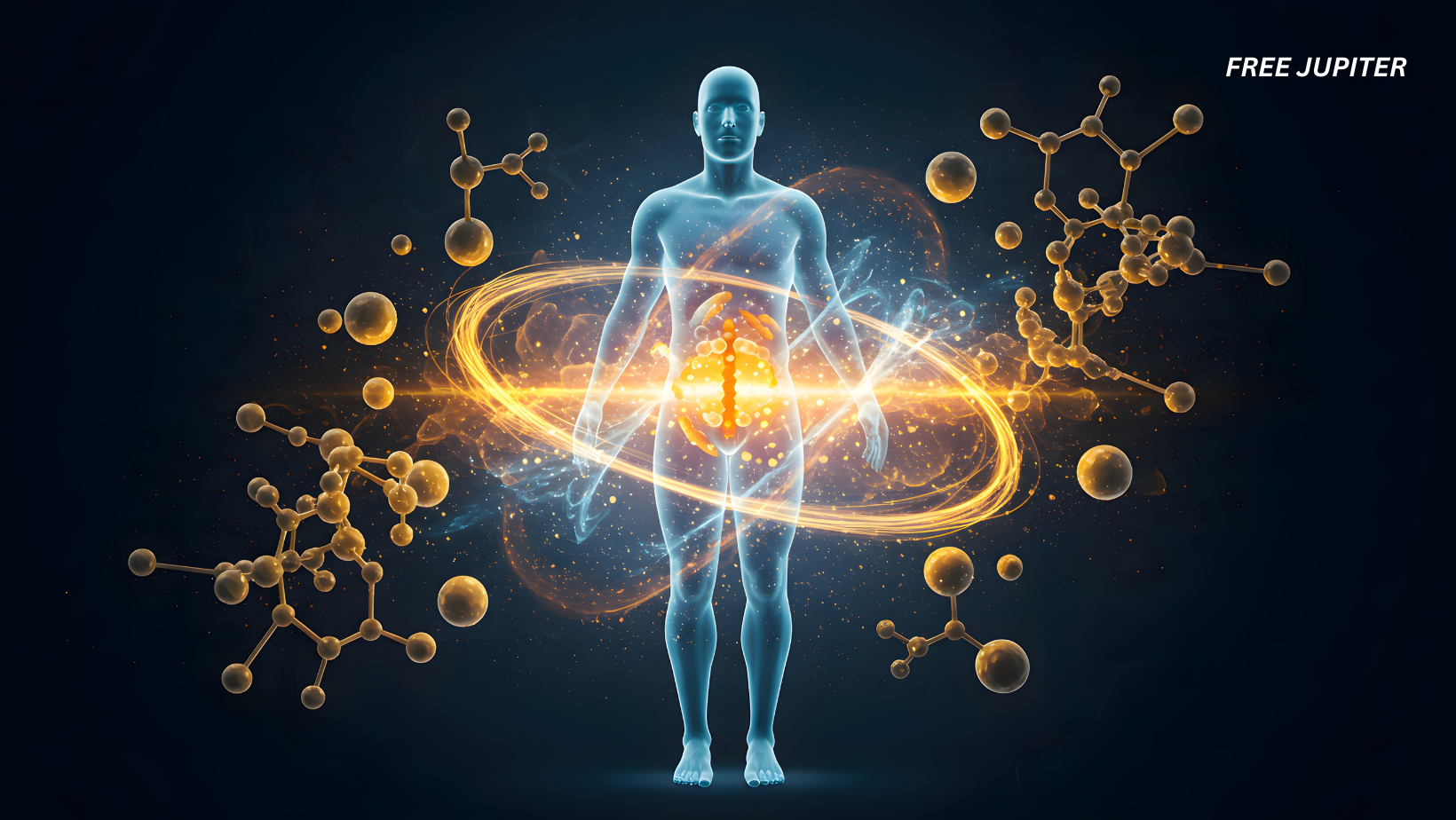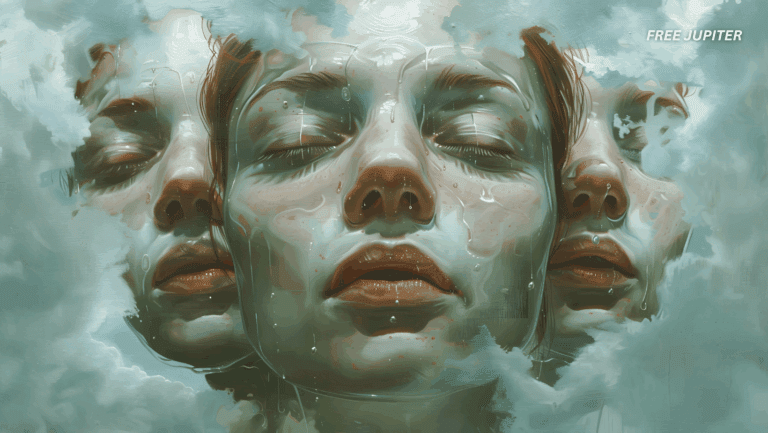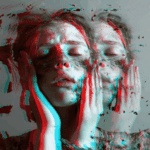Friendly Note: FreeJupiter.com shares general info for curious minds 🌟 Please fact-check all claims—and always check health matters with a professional 💙
What does it really mean to be human? You might think of skin, bones, and a beating heart—but that’s only part of the story. Beneath the surface, you’re a living universe made of ancient stardust, bustling cities of cells, and trillions of tiny companions working in harmony. From the Big Bang to your breakfast, your existence is a cosmic collaboration billions of years in the making. Let’s take a closer look at the extraordinary worlds within you.
A Universe Packed in a Body
Let’s start with a jaw-dropper: 7 octillion. That’s 7,000,000,000,000,000,000,000,000,000. This is roughly how many atoms make up your body. To put it in perspective, that’s way more than all the grains of sand on Earth. Every single one of those atoms is ancient—older than Earth, older than the Sun, older than anything you’ve ever known.
Hydrogen, the most common element in you, was born in the Big Bang nearly 14 billion years ago. The carbon and oxygen that keep you alive? Forged inside massive stars that exploded billions of years ago. You are literally a remix of stardust, molded by time into something that can think, feel, and binge-watch Netflix.
Read More: Your Body May Be In Better Shape Than You Think, According To Research
The Cellular Factory Inside You
Those atoms aren’t just floating around randomly. They’ve teamed up to form molecules and cells—the building blocks of life. You’ve got about 30 trillion human cells, all working around the clock to keep you alive. Every second, your body cranks out 25 million new cells like some kind of biological factory.
And all of that is guided by your DNA, the ultimate instruction manual. But here’s the twist—you’re not made of just human cells. Far from it.
Meet Your Microscopic Roommates
You’re not alone in there. Your body is home to an entire microbiome—a bustling metropolis of bacteria, viruses, and fungi. About 39 trillion microbial cells live on and inside you. For every human cell in your body, at least one tiny hitchhiker is tagging along.
You think you’re a single species? Nope. You’re a walking ecosystem, hosting thousands of different species at any given moment. And get this—your microbiome contains 500 times more genes than your own DNA. So, who’s really in charge here?
A Planet Called You
Think of yourself as a planet with different climates. Your armpits? A steamy jungle. Your hands? More like chilly tundras. The inside of your gut? A deep, warm cavern filled with life forms that thrive on your leftovers.
Even the two palms of your hands don’t share the same microbial population—only about one-sixth of their microbes match. You are a world of worlds, with species diversity that rivals rainforests.
Why Your Gut is a VIP
Of all the neighborhoods in your microbial city, the gut is the star of the show. Scientists have found strong links between gut health and everything from immunity to mood. Those microbes help you digest food, absorb nutrients, and even store fat.
They also act as repair crews, fixing damaged gut lining and playing bodyguard by spotting harmful invaders. Ignore your gut health, and you’re basically neglecting the city’s capital—it’s that important.
Living in Symbiosis
Biologists have a beautiful term for the relationship between you and your microbes: symbiosis—different organisms living together for mutual benefit. From the moment you’re born (or maybe even earlier), these microbes become your lifelong companions.
When you eat, they eat. When you travel, they tag along. When you die, they take over like tiny undertakers. In a way, each of us is a mini-zoo, a living, breathing multi-species collective. Or as writer Ed Yong puts it: a world in a single body.
The Bigger Picture: A World of Worlds
If one human body is a planet, then humanity is like a galaxy. Each life is a unique ecosystem, fragile and irreplaceable. This makes the loss of life during wars and conflicts even more tragic. When thousands perish in violence—whether in Gaza, Israel, or anywhere else—it’s not just individuals that vanish. Entire living worlds disappear.
Every child lost in conflict is a universe barely formed. Every adult gone is a constellation of stories, memories, and microbes wiped out. Our inability to protect these worlds reflects a failure to act as a united, global community—a failure of the bigger microbiome called humanity.
The Poetry of Existence
To be human is to be a paradox. You are made of ancient atoms, yet constantly renewing. You carry multitudes inside you, yet feel alone sometimes. You fight, forgive, break, and heal—all while your inner ecosystems hum along silently, keeping the show running.
You are water and electricity, wrapped in skin, filled with feelings. A living archive of stardust and symbiosis, wired for stories and survival. Every laugh, every tear, every heartbeat—powered by worlds within.
The Scientific Wonder of Being Human
From the Big Bang to the bacteria in your gut, your body is a product of countless processes working together in harmony. You are made of atoms from ancient stars, powered by trillions of living cells, and supported by an entire microscopic community that shapes your health and well-being.
Science shows us that being human is not a simple state—it’s a dynamic, interconnected system that evolved over billions of years. Understanding this doesn’t just deepen our appreciation of life; it reminds us how extraordinary and fragile it really is.
Read more: You Can Be Identified With 95% Accuracy—Just by The Wi-Fi Signals That Bounce Off Your Body
So the next time you look in the mirror, remember—you’re not just seeing skin, bone, and muscle. You’re looking at a living mosaic of stardust, a collection of 7 octillion ancient atoms forged in the hearts of exploding stars billions of years ago. You’re not simply in the universe—you are the universe, recycled and reborn, carrying within you the history of everything that has ever existed.










